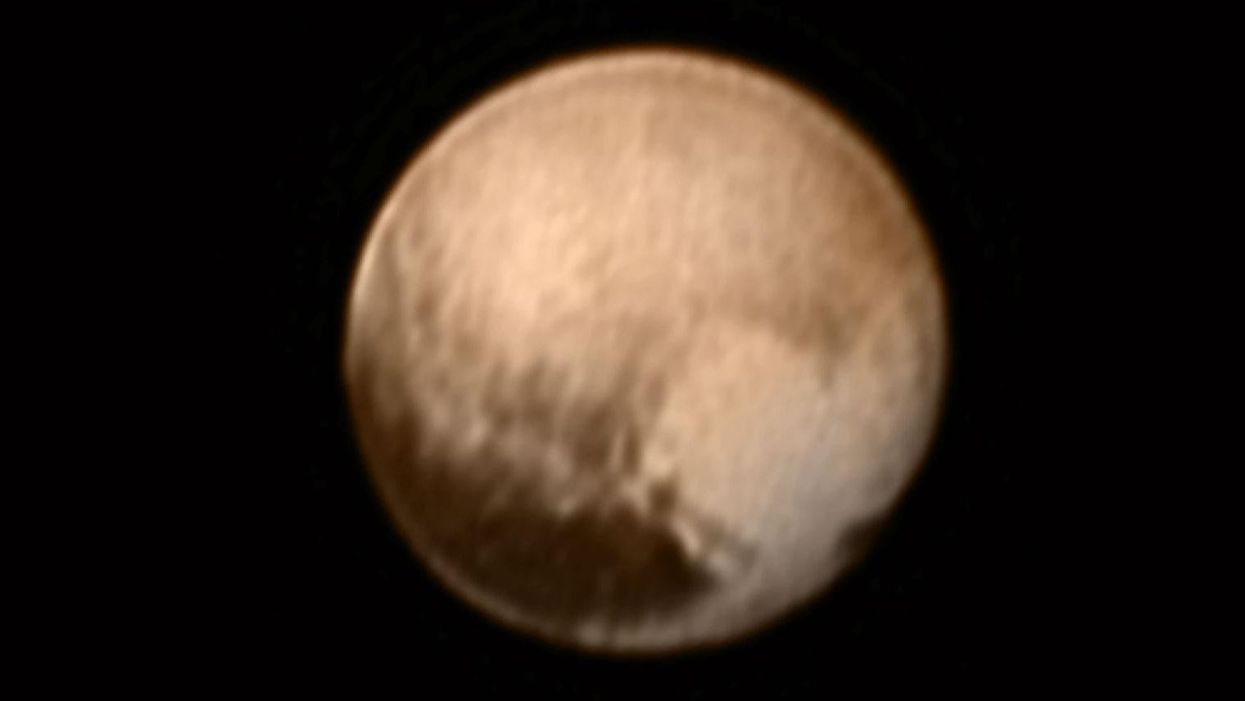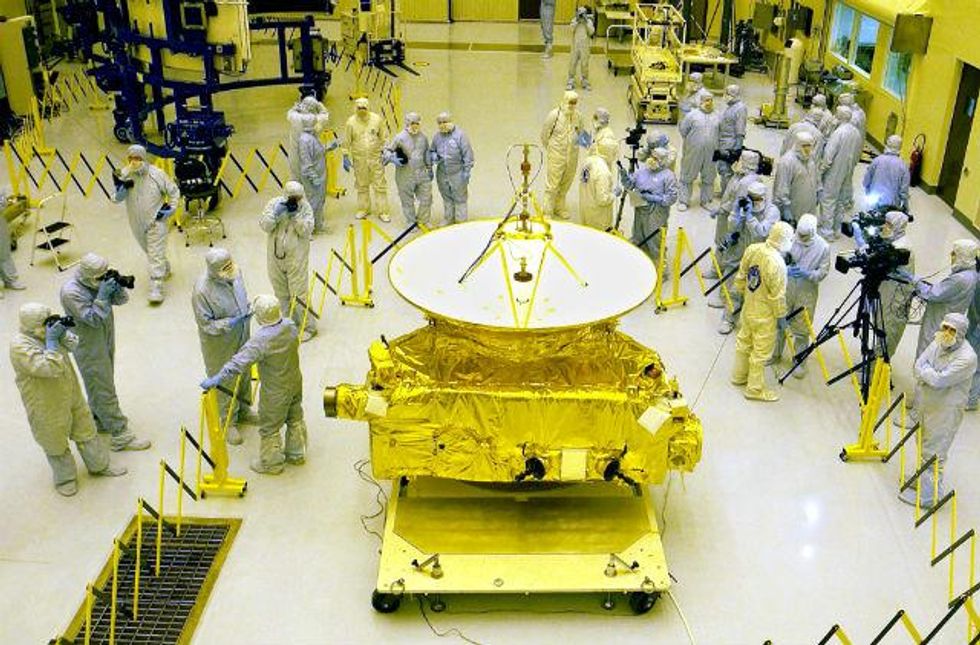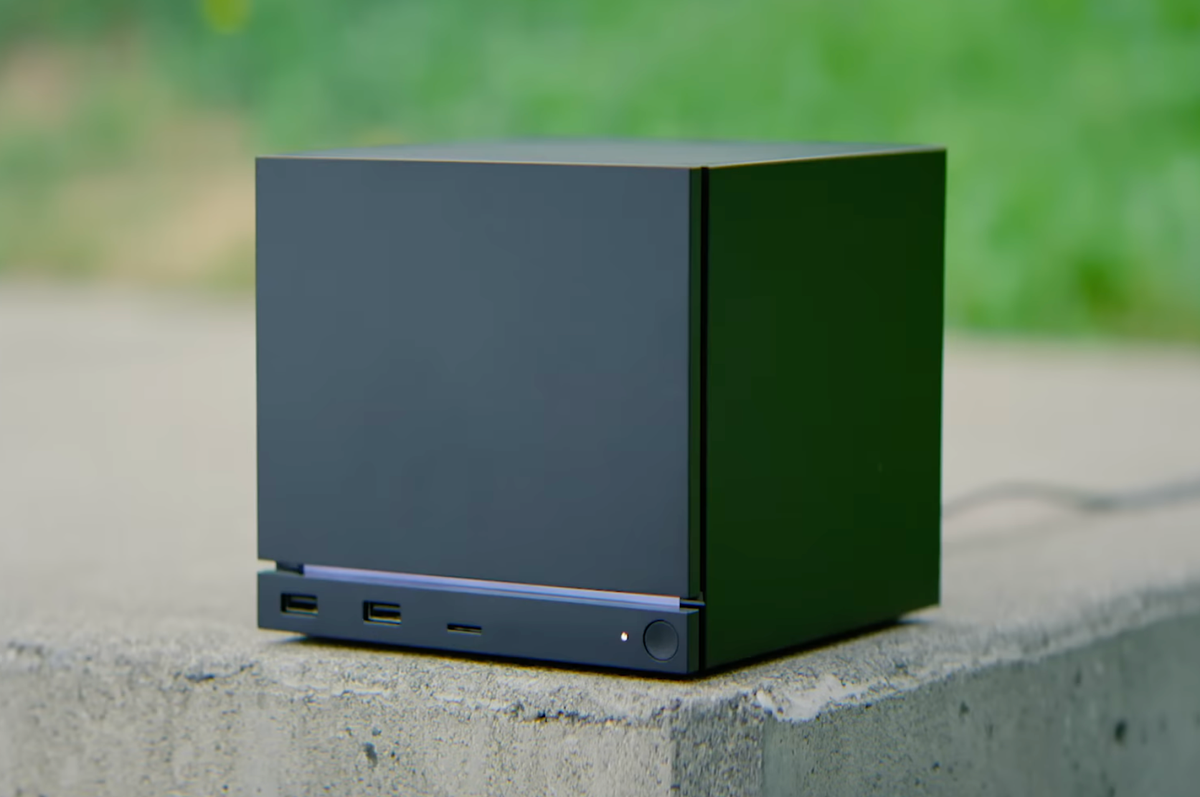News
Bethan McKernan
Jul 09, 2015

In classroom models of the solar system used before Pluto got demoted from planet status in 2006, the dwarf planet was often portrayed as a colour somewhere in-between blue and grey, a steely, shadowy loner on the outskirts of the solar system.
But it turns out that's not the case - recent images from Nasa's New Horizons space probe show that Pluto is actually a rusty red colour, and looks a bit like a miniature version of Mars:
The best image of Pluto ever taken, sent from the New Horizons space probe last week from 7.8million miles awayAccording to New Horizons' principal investigator, Alan Stern of the Southwest Research Institute, scientists have known that Pluto might actually be red for decades, but no spacecraft had ever got close enough to determine it before.
While Mars' rusty colour comes from the presence of iron oxide in rocks and the atmosphere, Nasa thinks the shades of the other red planet come from hydrocarbon molecules that are formed when cosmic rays and solar ultraviolet light come into contact with methane in Pluto's atmosphere and on its surface.
New Horizons, which launched in 2006 to investigate Pluto and its moons, is now finally close enough to send back images that accurately reflect the dwarf planet's colour and surface texture.
Near the equator, sharp edged dark regions are surrounded by brighter terrain. Farther north, shadings are more subtle, with suggestions of a more varied, mottled surface.
“Even at this resolution, Pluto looks like no other world in our solar system,” said mission scientist Marc Buie of the Southwest Research Institute, Boulder.
“We’re already seeing a remarkable amount of detail, and the complexity continues to increase as the images get better.”
The probe has travelled more than 3billion miles in a journey that has taken almost ten years, and is due to be closest to Pluto on 14 July, so stay tuned for more discoveries about the solar system's most famous pipsqueak.
More: This is literally the best photo of Pluto humankind has ever taken
More: This work experience kid discovered a new planet. What have you done at work today?
Top 100
The Conversation (0)













